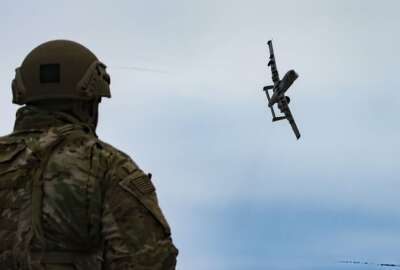
Military secretaries happy about acquisition reforms, but want time to take a breath
After three years of procurement reform, the military services want time to assess the new acquisition tools they've been given.
At the beginning of the month, the Armed Services Committees received high marks for their procurement reform efforts from the military services’ acquisition chiefs. This week was more of the same, but with a few caveats from the civilian leaders of each military branch.
The input from the Army, Navy and Air Force secretaries is particularly notable considering Congress decentralized important buying decisions from the Defense Department to the service secretaries in previous reforms.
But while the leaders of the services seemed grateful for the new authorities, less red tape and new marketplaces, they also seem ready to take a step back and marinate on the flurry of new powers handed to them over the last three years.
“There’s some fascinating and interesting tools that we’re using and we are going to use and look forward to using, so thank you for those. I would ask for a stabilization period so that we can digest what we have and have the ability to come back to you if we need more, but right now the knife drawer looks full,” Navy Secretary Richard Spencer said, during the March 20 Housed Armed Services Committee hearing.
That may cause Thornberry to rethink pushing for more acquisition reforms in the 2019 defense authorization bill, even though he already said he was considering adding more.
Air Force Secretary Heather Wilson was more critical of some of the reforms, but was still thankful for the overarching changes Congress made in the past.
“There’s several things we are taking advantage of. The other transaction authorities, prototyping and experimentation are tremendously valuable, as is the decision of Congress to push down to lower levels of authority, milestone decision authority. There are a few other things that I would say are strings attached that I think might be worth looking at,” Wilson said.
Wilson pointed out a few areas in costing and fielding estimates that still needed to go all the way up to the defense secretary for approval and could be better served, she said, at the service level.
An independent technical readiness assessment is going through the same issue, she said.
“All of these if you push authority down, but you still require some of the sub-decisions to go up the chain may not result in the speed that you really want,” Wilson said. “There are a few things we need to make sure the details get pushed to the milestone authorities.”
Wilson wasn’t the only one with tweaks for Thornberry’s acquisition reforms. The service acquisition chiefs had a few qualms as well when they testified before the House Armed Services Committee on March 7.
“Rapid acquisition … has a limitation on it. It says you can do zero to five years, but in zero to five years you have to be able to field a full set to the Army. The Army is very big. It makes it very difficult to use that,” Assistant Secretary of the Army for Acquisition, Logistics and Technology Bruce Jette said.
He added he’d like to change the requirement from fully fielded to initial operational capability to ease the restriction a bit.
“That would give me a lot more flexibility to apply it to a broader array of opportunities,” he said.
Jette said while Congress pushed more decision authority down to the services, they still have to run decisions back up to the deputy defense secretary, which takes extra time. Jette said he’d like to see that eased as well.
Assistant Secretary of the Navy for Research, Development and Acquisition James Geurts said there are some areas where there is conflicting guidance. Those are areas he said he would put in the “refinement” category for future bills.
Geurts also brought up the issue of decluttering legislation. He said there is a lot of legislation out there saying the same things, but with small changes between them.
Geurts said now that the military has had some time to work with the new acquisition changes, 2019 would be a good time to refine and declutter those issues.
Copyright © 2024 Federal News Network. All rights reserved. This website is not intended for users located within the European Economic Area.
Scott Maucione is a defense reporter for Federal News Network and reports on human capital, workforce and the Defense Department at-large.
Follow @smaucioneWFED
Related Stories






